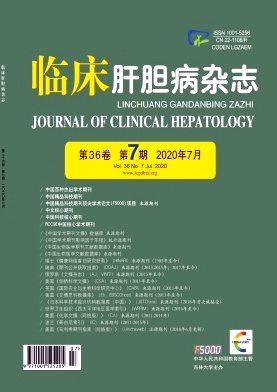Objective To investigate the similarities and differences in the clinical features of acute versus chronic drug-induced liver injury( DILI). Methods Clinical data were collected from 183 patients who were hospitalized and diagnosed with DILI in Department of Infectious Diseases,Peking University First Hospital,from January 2015 to December 2018,and the patients were divided into acute group with 138 patients and chronic group with 45 patients. Related data were collected,including general information,underlying diseases,history of suspected drugs,history of allergy,drinking history,symptoms and signs,laboratory examination,radiological examination,liver biopsy,treatment,and prognosis. Roussel Uclaf Causality Assessment Method( RUCAM) score was determined for all patients diagnosed with DILI,and the type and severity of liver injury were determined. The t-test was used for comparison of normally distributed continuous data between groups,and the Mann-Whitney U test was used for comparison of non-normally distributed continuous data between groups; the chi-square test was used for comparison of categorical data between groups; a logistic regression analysis was used to investigate the influencing factors for chronicity of DILI. Results Among the 138 patients in the acute group,105( 76. 1%) had DILI caused by Chinese herbal medicine and 15( 10. 9%) had DILI caused by antibiotics,while among the 45 patients in the chronic group,33( 73. 3%) had DILI caused by Chinese herbal medicine and 5( 11. 1%) had DILI caused by antibiotics. There were significant differences between the two groups in sex( χ2= 4. 774,P = 0. 029),type of liver injury( χ2= 9. 848,P = 0. 02),and severity of DILI( χ2= 8. 012,P = 0. 046);77. 8% of the patients in the chronic group had a RUCAM score of ≤6,while 79. 7% of the patients in the acute group had a RUCAM score of ≥6,and there was a significant difference between the two groups( χ2= 21. 471,P = 0. 002). There were significant differences between the two groups in platelet count( PLT),alanine aminotransferase( ALT),aspartate aminotransferase,direct bilirubin,creatinine,detection rate of ANA,and detection rate of SMA( all P < 0. 05). Compared with the acute group,the chronic group had a significantly longer incubation period and a significantly higher proportion of patients with liver cirrhosis or no response to treatment( all P < 0. 05); there was a significant difference between the two groups in the proportion of patients treated with glucocorticoids( χ2= 27. 109,P < 0. 05) or glucocorticoids combined with azathioprine( χ2= 27. 408,P < 0. 05). A total of 16 patients( 11. 6%) in the acute group and 7( 15. 6%) in the chronic group had autoimmune hepatitis-like DILI; 29 patients in the acute group underwent liver pathological examination,among whom2( 6. 9%) had an unknown cause, while 27 patients in the chronic group underwent liver pathological examination, among whom6( 22. 2%) had an unknown cause. ALT( odds ratio [OR]= 0. 997,95% confidence interval [CI]: 0. 985-0. 999,P = 0. 003) and PLT( OR = 0. 997,95% CI: 0. 986-0. 998,P = 0. 013) were independent predictive factors for chronicity of DILI. Conclusion Compared with acute DILI,chronic DILI is more common in female patients and is difficult to diagnose,with a long incubation period,a higher proportion of patients with cholestasis type,and a higher detection rate of autoantibody,and it requires glucocorticoid and immunosuppressive therapy more and tends to have poorer prognosis. ALT and PLT may be independent predictive factors for the chronicity of DILI.







 DownLoad:
DownLoad: